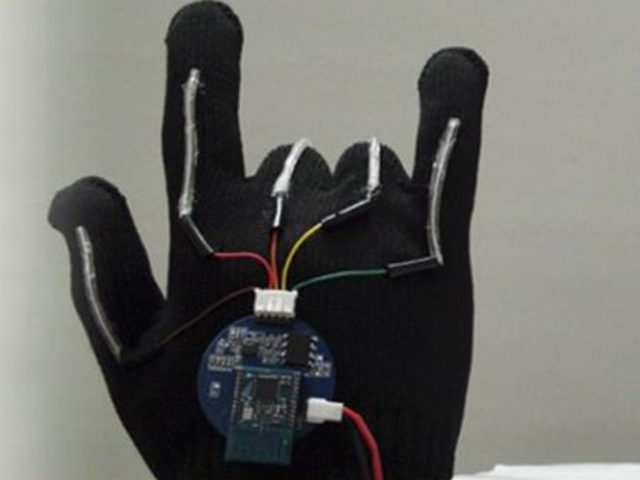University of California scientists announced on Monday that they have developed a glove that turns sign language into speech in real time.
On Monday, UCLA researchers revealed a glove that monitors the movement of the hand and its individual digits to translate sign language. Signals from the glove, transmitted to a simple application, can turn sign language directly into speech. Once fully developed, the technology could virtually eliminate the need for sign language translators.
According to the official announcement:
The system includes a pair of gloves with thin, stretchable sensors that run the length of each of the five fingers. These sensors, made from electrically conducting yarns, pick up hand motions and finger placements that stand for individual letters, numbers, words and phrases.
The device then turns the finger movements into electrical signals, which are sent to a dollar-coin–sized circuit board worn on the wrist. The board transmits those signals wirelessly to a smartphone that translates them into spoken words at the rate of about a one word per second.
“Our hope is that this opens up an easy way for people who use sign language to communicate directly with non-signers without needing someone else to translate for them,” said Jun Chen, principal investigator on the research, as well as an assistant professor of bioengineering at the UCLA Samueli School of Engineering. “In addition, we hope it can help more people learn sign language themselves,” Chen continued.
In testing, a “custom machine-learning algorithm” was able to recognize 660 distinct signs, including the entire alphabet and numbers zero through nine. And while previous similar projects “were limited by bulky and heavy device designs or were uncomfortable to wear,” this new design is “made from lightweight and inexpensive but long-lasting, stretchable polymers,” with electronic sensors that are described as “very flexible and inexpensive.”
Though Chen said a commercially viable version of the product would require an even higher vocabulary and faster translation time, this represents a major leap forward for as many as 1,000,000 Americans who depend on sign language as a primary mode of communication in their daily lives.

COMMENTS
Please let us know if you're having issues with commenting.